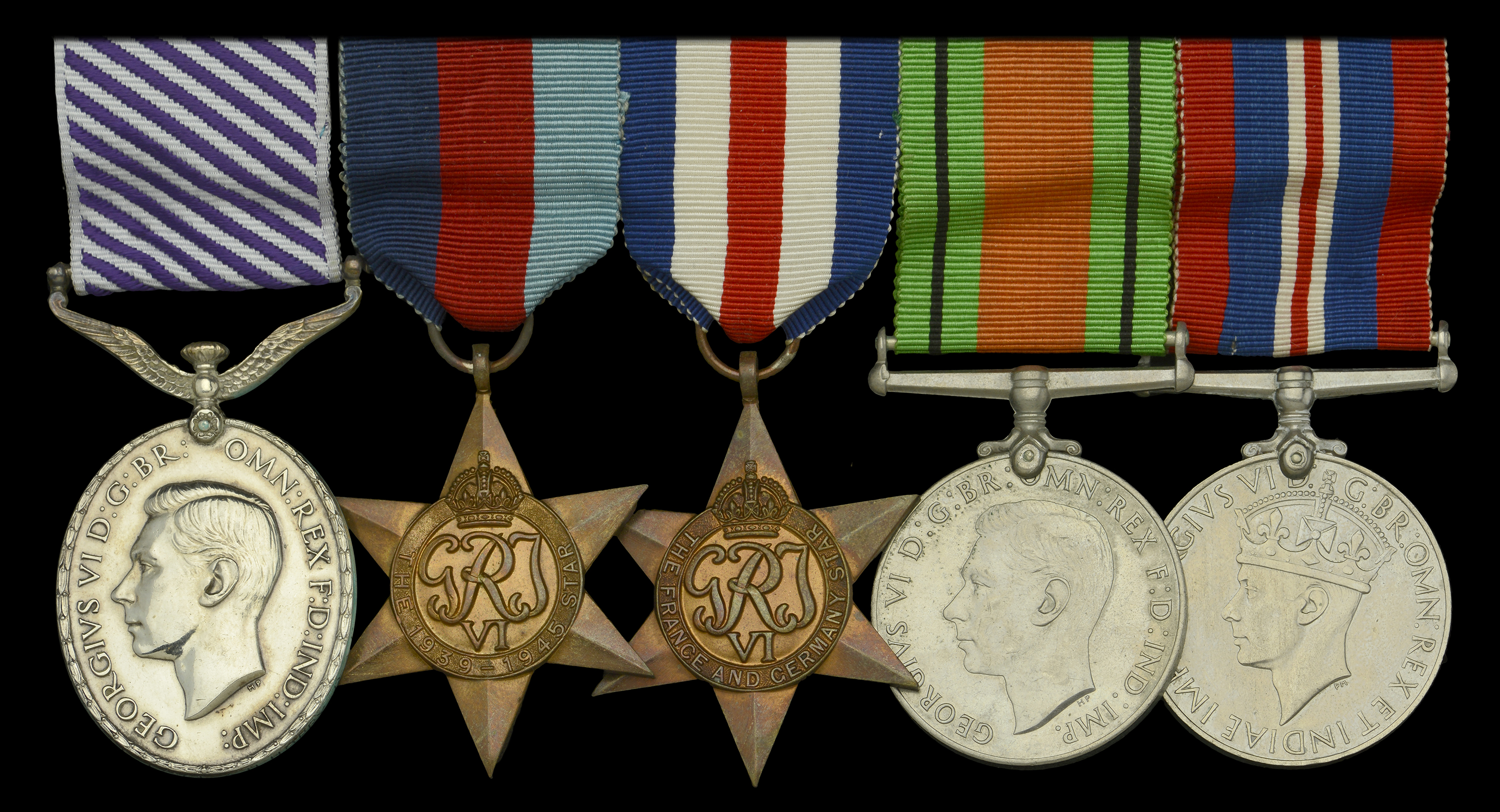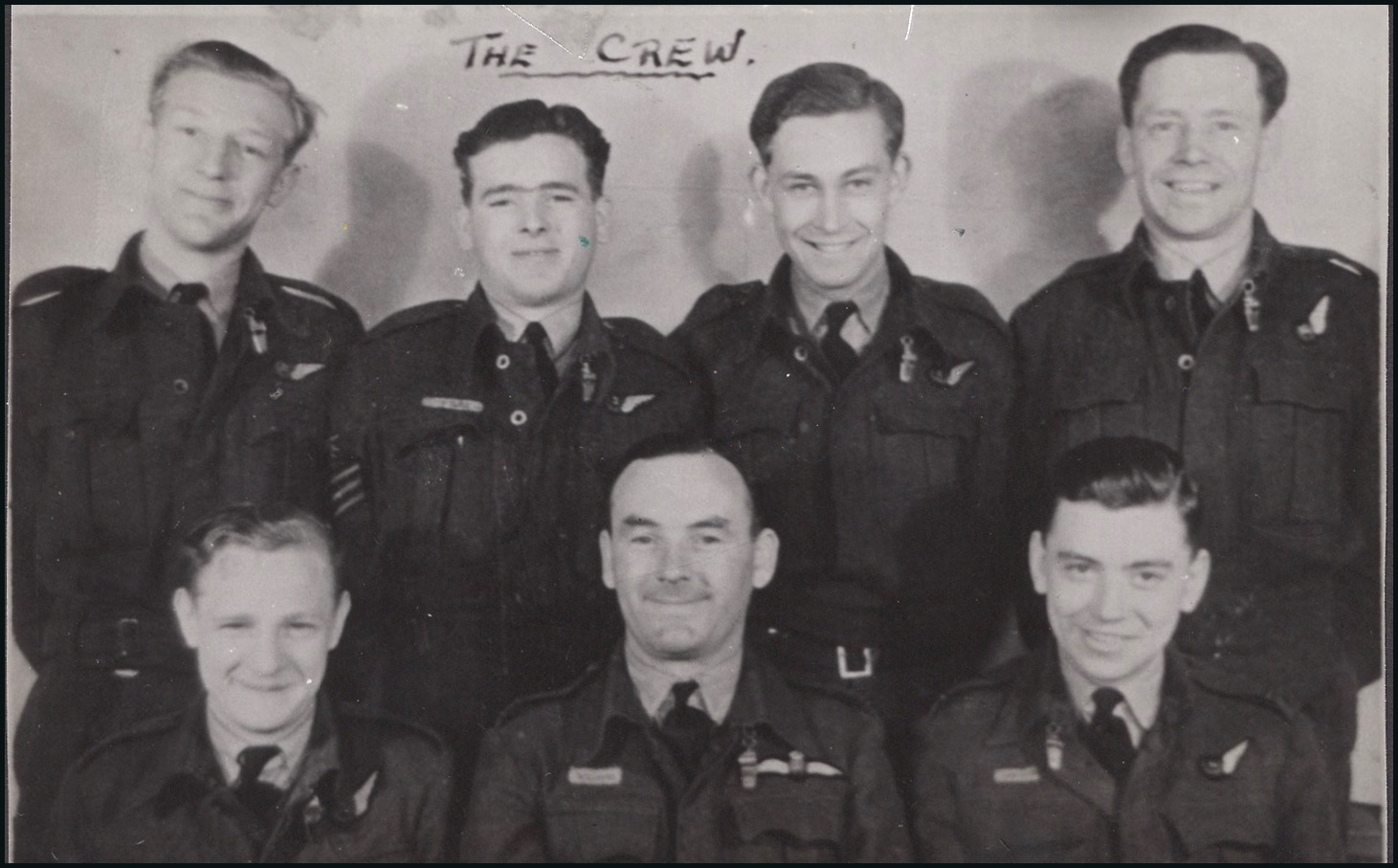The notable Second War Immediate D.F.M. group of five awarded to Flying Officer A. H. Horry, Royal Air Force Volunteer Reserve, a Bomb Aimer in No. 9 Squadron in the decisive attack on the Tirpitz on 12 November 1944 Distinguished Flying Medal, G.VI.R. (1332586 F/Sgt. A. H. Horry. R.A.F.); 1939-45 Star; France and Germany Star; Defence and War Medals 1939-45, mounted as worn, good very fine (5) £7,000-£9,000 --- Importation Duty This lot is subject to importation duty of 5% on the hammer price unless exported outside the UK --- --- D.F.M. London Gazette 30 January 1945. The original recommendation states: ‘As Air Bomber, this N.C.O. has taken part in many sorties including the last two attacks on the German battleship Tirpitz. On the first attack which was undertaken from a Russian base, he gave great assistance to his captain, by successfully map reading in very bad visibility, but was prevented from taking part in the attack by the unserviceability of his aircraft. On the last two attacks, which necessitated very long journeys, Flight Sergeant Horry again assisted his pilot and navigator by the accuracy of his map reading. In the actual bombing of his targets he has shown the greatest coolness and steady determination to drop his bombs upon the target. He has at all times shown the greatest keenness to operate and has proved a most valuable member of a very good crew.’ Remarks by Base Commander: ‘A key member of a very good bombing team. For his share in the successful attack on Tirpitz I recommend the award of the Distinguished Flying Medal.’ Arthur Henry Horry was born at Bungay, Norfolk, on 10 September 1923, and enlisted in the Royal Air Force in January 1941. Having undertaken training in Canada, he returned to the U.K. in March 1943 and was advanced to Flight Sergeant at the end of the year. In June 1944, he commenced his first operational tour as a Bomb Aimer in No. 106 Squadron, a Lancaster unit based at R.A.F. Metheringham. Over the coming weeks, he completed 19 sorties, mainly to France, including strikes against the V.1 weapon sites at Saint-Leu-d’Esserent in early July and at Trossy St. Maxim on successive nights in early August. Transferring to No. 9 Squadron in September 1944, he undertook specialist training at R.A.F. Bardney in readiness for the Tirpitz operations, and participated in a successful ‘Tallboy’ strike on the Sorpe Dam on 15 October 1944. His first Tirpitz mission was curtailed by poor weather but, on 29 October 1944, he and his crew reached their designated target, as confirmed by the squadron’s operational record book: ‘Primary attacked at 0855 hours … centre of ship in [Horry’s] bomb sight. Light and heavy flak moderate to light from shore batteries and Tirpitz, which was also firing heavy guns from aft. Rear Gunner saw a direct hit on the bows of the Tirpitz, followed by a big explosion and column of brown smoke.’ But it took another strike to finish the job, namely Operation ‘Catechism’ flown on the 12 November 1944, a task delegated to 9 and 617 Squadrons under the overall command of Wing Commander J. B. ‘Willy’’ Tait, D.S.O., and undertaken from a base in Russia. The attack was a resounding success, three direct hits in quick succession causing Tirpitz to capsize. Horry’s role as Bomb Aimer was patently a crucial one and it’s not without interest that No. 9 Squadron claimed it was their aircraft that obtained the vital hits. And it was to the Wireless Operator in Horry’s Lancaster that fell the duty of signalling H.Q. in the event of Tirpitz’s demise, a duty duly fulfilled and the news rapidly passed to the B.B.C. for a broadcast was made as the Lancaster crews were still over Norway. Horry was subsequently among ten aircrew to be recommended for a decoration on the same occasion, the rest of them being awarded the D.F.C., thereby making his D.F.M. a unique squadron award. The covering notes for the recommendations state: ‘These members of aircraft crew have each completed many operational missions and have displayed the highest standard of keenness and determination throughout. On 12 November 1944, they participated in the decisive attack on the German warship Tirpitz, a target against which all of them had previously been in action. On this last occasion the big battleship was sunk. The success achieved reflects the greatest credit on the efforts of these members of aircraft crew who, in their various capacities as pilots, navigators and air bombers displayed skill, courage and resolution of a high order.’ Horry went on to complete his operational tour, attacking specialist targets such as U-boat pens, viaducts and flying-bomb sites. Commissioned in February 1945, he was finally discharged as a Flying Officer in February 1946. Sold with two original letters from the recipient, which outline his wartime career, an aircrew reunion photograph, and copied research.









